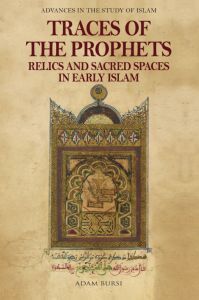Bursi (Adam), Traces of the Prophets Relics and Sacred Spaces in Early Islam, Edinburgh, Edinburgh University Press, 2024, 288 p. ISBN 9781399522328
Author
Adam Bursi is an editorial assistant at Fortress Press. He received his PhD in Near Eastern Studies from Cornell University, and has held research and teaching positions at the University of Tennessee, the Hill Museum and Manuscript Library, and Utrecht University. He coedited the collection ‘His Pen and Ink Are a Powerful Mirror’: Andalusi, Judaeo-Arabic, and Other Near Eastern Studies in Honor of Ross Brann (Brill, 2020), and his articles have appeared in the journals Medieval Encounters, Arabica, Studies in Late Antiquity, and elsewhere.
Presentation

Traces of the Prophets rewrites the history of holy bodies and sacred spaces in the emergence of Islam. Rather than focusing on theological controversies among early Muslims, this book is grounded in the material objects and places that Muslims touched and "thought with" in defining Islamic practice and belief. While often marginalized in modern scholarship, sacred relics and spaces stood at the disputed boundaries of emergent Islamic identities. Objects and spaces like Abraham’s footprints in Mecca and Muhammad’s tomb in Medina provided sites of shared Islamic ritual, as well as tools for differentiating Muslims from non-Muslims.
Contributing to scholarship studying Islam alongside other late antique religions, Traces of the Prophets highlights how early Muslims deployed sacred objects and spaces to inscribe and dispute Islam’s continuities with, and differences from, Judaism and Christianity. The book argues that prophets’ relics ritually and rhetorically shaped Muslim identities in the first centuries of Islam.
Content
List of Abbreviations
Acknowledgements
Introduction
1 Grave Markers: Rhetoric and Materiality of Relic and
Tomb Veneration in Early Islam
2 A Clear Sign: The Maqām Ibrāhīm and Early Islamic Continuity and Difference
3 Inverted Inventions: Finding and Hiding Holy Bodies in the First Islamic Century
4 Paradoxes and Problems of the Prophetic Body: Muḥammad’s Corpse and Tomb
5 Places Where the Prophet Prayed: Ritualising the Prophet’s Traces
Epilogue
Bibliography
Index
(Credit Photo : https://guardian.ng/life/7-holiest-sites-in-islam/)
